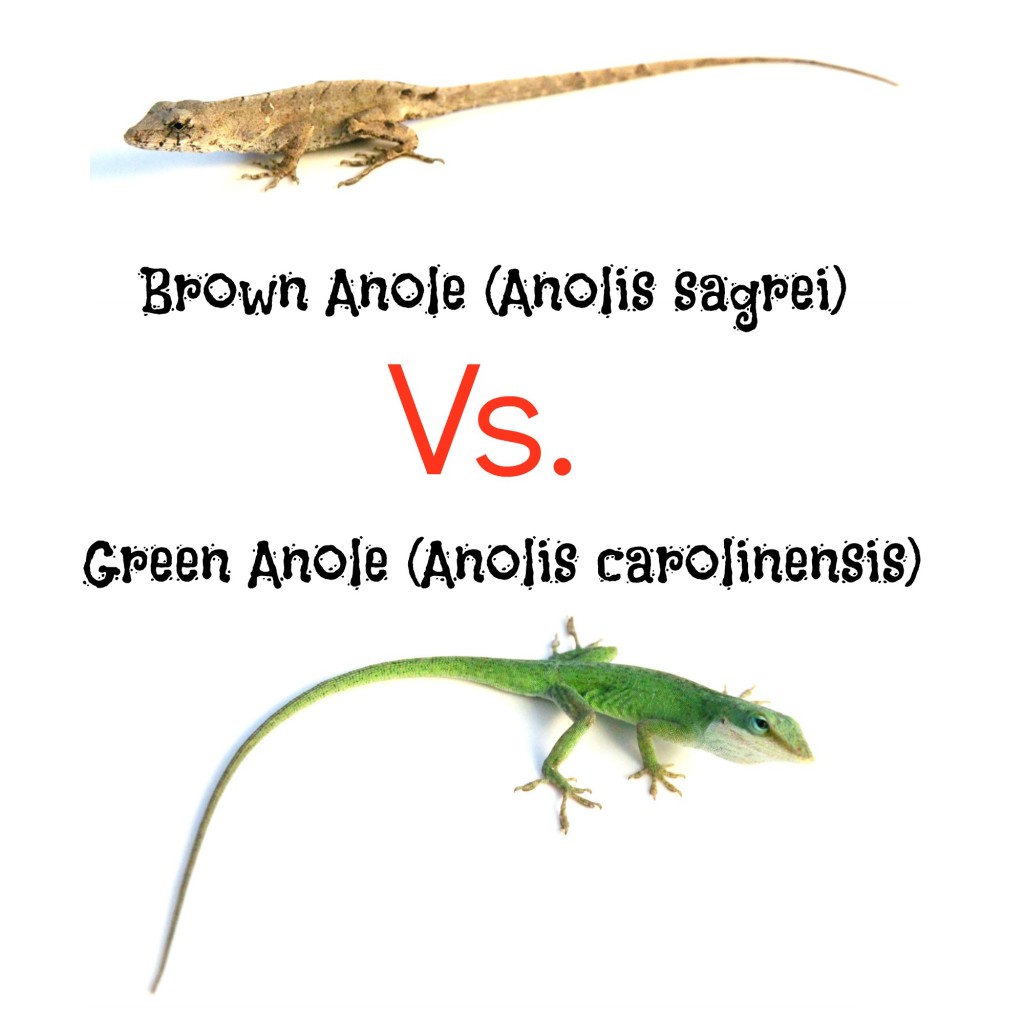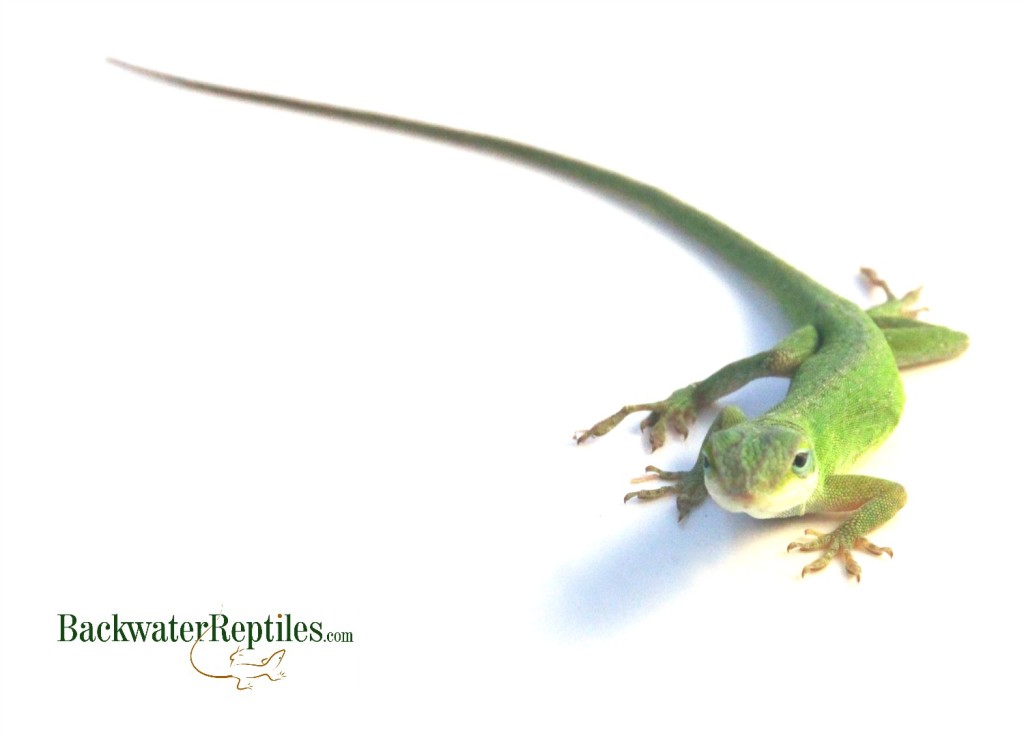Reptile enthusiasts have been keeping anole lizards as pets for many years. They’re even readily available at chain pet stores these days. But did you know that there are actually many species of anoles? In this article, we’ll explain the similarities and details between the two most common types – the green anole (Anolis carolinensis) and the brown anole (Anolis sagrei).
Morphology & Appearance
Would you believe that the main difference between brown and green anoles as far as looks go is color? The green anole is usually green and the brown anole is always some shade of brown…go figure, right?
As far as body shape goes, both species have long, lean bodies with limber legs and somewhat blocky, triangular heads. Each species also possesses a dewlap underneath its bottom jaw which is used in territorial displays. The green anole’s dewlap is pink or red while the brown anole’s is a dark reddish brown color.

Both species are able to change color within a limited spectrum. The green anole can display either a bright green color or a dull, brown shade. The brown anole, on the other hand, cannot turn green (i.e. is always brown) and will usually have stripes, spots, or bars on its back.
Habits & Lifestyle
Both anole species are insectivorous and will consume any insect they can fit in their mouths. They will even cannibalize smaller anoles!
Both the green and brown anole are fairly small lizards reaching virtually the same size when fully mature. Males are generally larger than the females and will max out at around eight inches in length. The females will grow to be around six inches long.
Both species can be found in the U.S., although only the green anole is native. The brown anole originated in Cuba and the Bahamas and is therefore considered an invasive species in the U.S. Currently, the two species occupy much of the same habitat and territory and compete fiercely.
Anoles, both green and brown, are avid climbers and are commonly found in trees, sunning on fences, and on the sides of houses.
Keeping Anoles in Captivity
As previously mentioned, green and brown anoles are very common pet lizards with virtually the same care requirements. They are very easy to maintain and make great starter lizards.
Because anoles are arboreal lizards, make sure that you have more vertical than horizontal enclosure space for either species of anole. These guys are climbers and feel at home in foliage, so be sure you include some vines and/or plant foliage that they can hide in.
Both green and brown anoles are “sunny” little lizards that enjoy warm climates, so your anole should get around eight hours of daylight (i.e. full spectrum UV lighting) as well as a heat lamp that maintains basking temperature of approximately 90 degrees in the daytime.

You can feed both species of anole crickets, meal worms, small roaches, and other appropriately-sized feeder invertebrates. A water dish can be provided, but don’t be surprised if your anole won’t drink from it, since not all anoles seem to recognize a water dish. Also, make sure the dish is very shallow because anoles can be trapped easily and drown in a deep water dish. If your anole doesn’t hydrate from a water dish, it will lap water that collects in little pools on leaves and branches, so misting would then be a requirement.
We hope this helps shed some light on the similarities and differences between these two common lizards. Backwater Reptiles offers both green anoles for sale as well as brown anoles for sale on our website.



